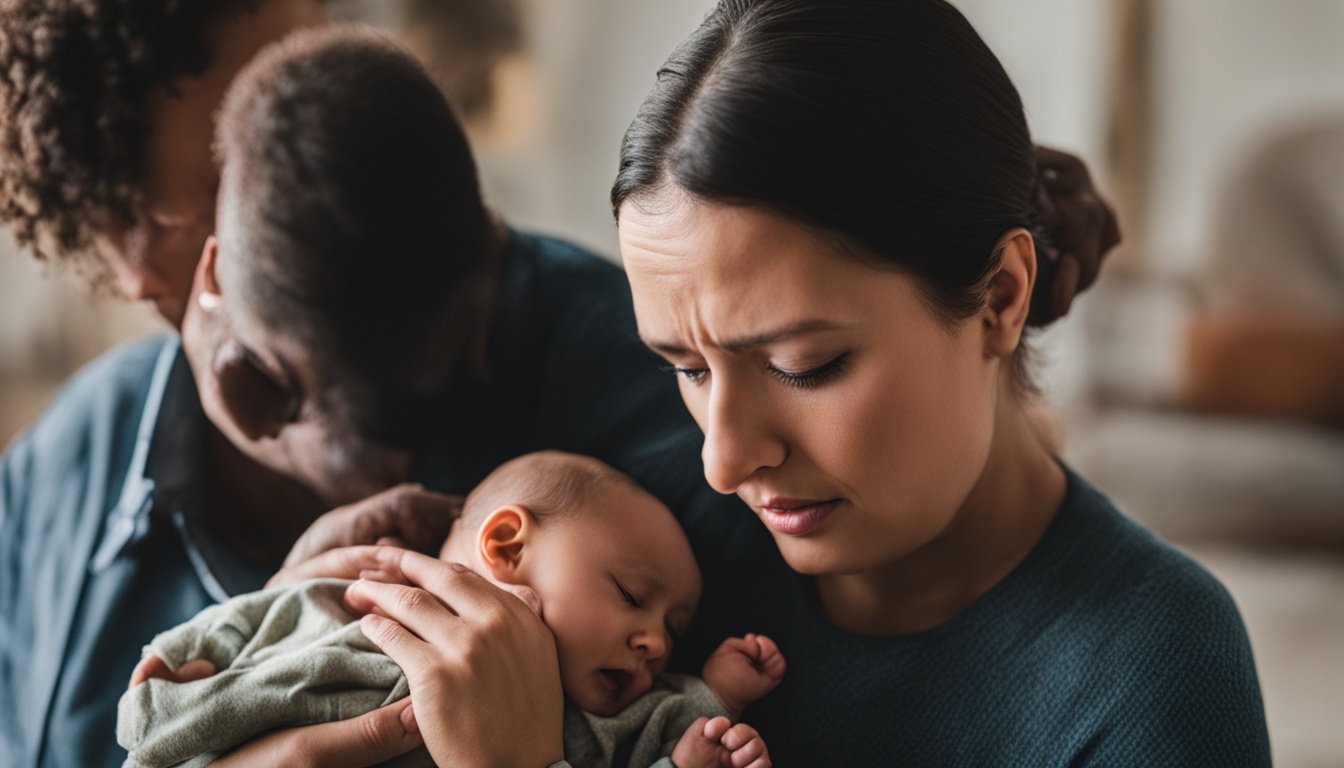Shaken baby syndrome is a severe form of infant head trauma. It’s caused by violent shaking that hurts the brain. Children under two are mainly affected, with most cases between birth and 8 months.
When a baby’s head is shaken really fast, the brain can get hurt. This shaking can cause serious brain injuries or even be life-threatening.
Key Takeaways:
- Shaken baby syndrome is a severe form of infant head trauma caused by violent shaking.
- It primarily affects children under two years old, with the highest incidence occurring between birth and 8 months.
- Rapid acceleration and deceleration forces can cause the brain to move violently inside the skull, resulting in serious brain damage and life-threatening injuries.
- Early diagnosis and intervention are crucial for improving the outcomes of children affected by shaken baby syndrome.
- Stem cell therapy shows promise as a potential treatment for the brain damage caused by shaken baby syndrome.
Consequences and Prevention of Shaken Baby Syndrome
Shaken baby syndrome’s effects can last a lifetime. It’s caused by severe shaking of an infant’s head. This can lead to lasting problems and is sometimes deadly. Knowing about it and how to prevent it is very important.
Long-Term Effects of Shaken Baby Syndrome
If a baby is shaken very hard, it can hurt their brain for life. This damage can cause issues with thinking and moving. It also might lead to problems seeing and hearing, seizures, and in the worst case, death.
Less intense shaking can also hurt a baby. They might develop slowly, affecting how they learn and grow.
Prevention of Shaken Baby Syndrome
Stopping shaken baby syndrome starts with teaching people about it. Parents, caregivers, and doctors all need to know how to keep infants safe from being shaken.
Important steps to prevent this include:
- Learning the signs and dangers.
- Finding healthy ways to handle stress and getting support if you need it.
- Creating a team to help with caregiving and offer emotional help.
- Avoid shaking or any harsh jerking motions on a baby.
- Talking to other caregivers about the dangers.
- Setting up a safe space for the baby, like using car seats and cribs correctly.
Creating a caring community is key to stopping shaken baby syndrome before it occurs.
Shaken Baby Syndrome Statistics
| Statistic | Figure |
|---|---|
| Estimated number of cases of shaken baby syndrome in the United States annually | 1,400 |
| Percentage of shaken baby syndrome cases resulting in death | 25% |
| Age group most affected by shaken baby syndrome | Birth to 8 months |
| Percentage of shaken baby syndrome cases caused by male perpetrators | 80% |
These numbers show how common and dangerous shaken baby syndrome is. By knowing the risks and how to stop them, we can make sure our kids are safe.
Seeking Treatment and Support for Shaken Baby Syndrome
Diagnosing shaken baby syndrome needs health experts to do a detailed check. They look closely at the brain injury and signs of abuse. They use exams, images, and eye checks to get important details. With this info, they can choose the best way to help each child.
Acting early helps kids with shaken baby syndrome do better. Finding and treating it quickly can reduce brain damage and other issues. Sometimes, doctors may suggest stem cell therapy. This new treatment aims to fix the brain and make life better for these children.
But just medical help isn’t enough. Kids and their families need support too. This can be talking to someone, learning more, or joining a group. These ways help with stress and are key in getting better and staying positive.

